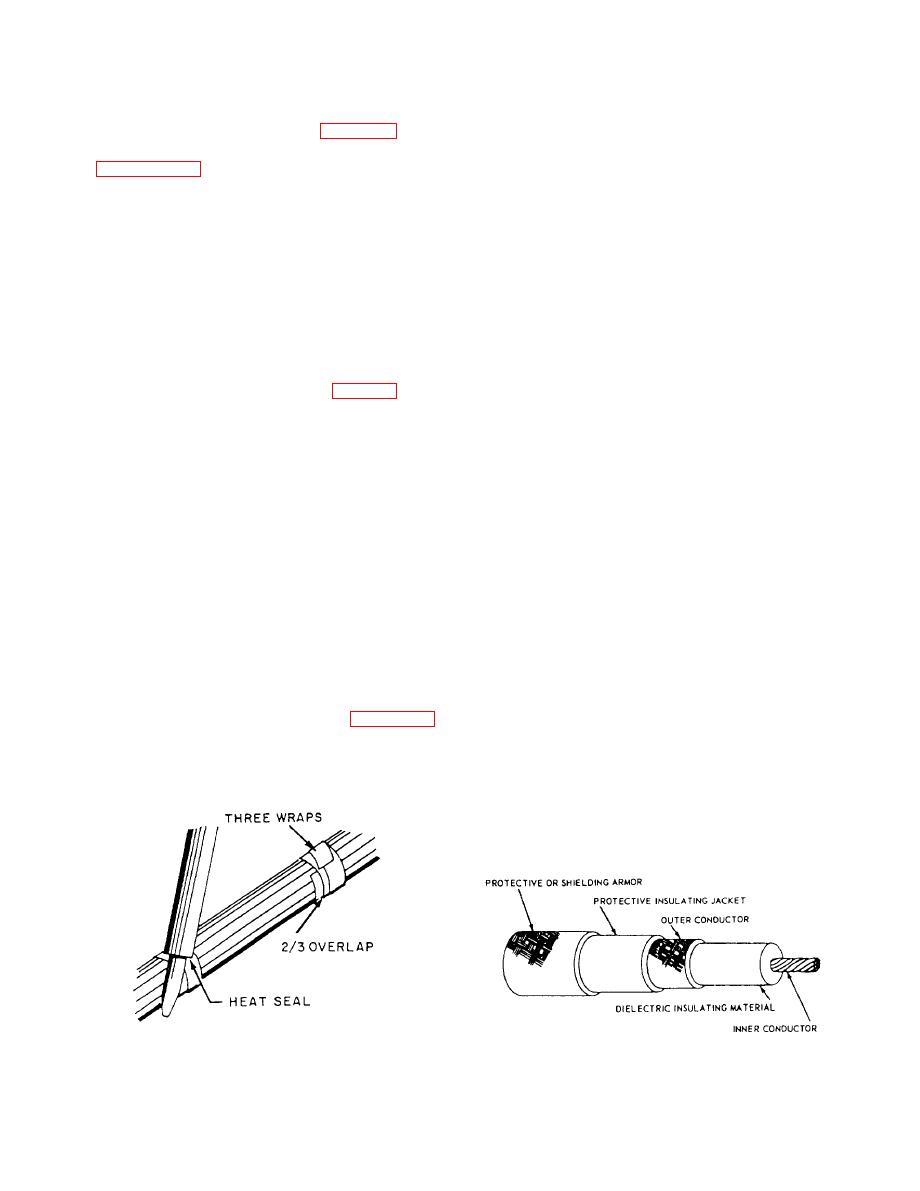 |
|||
|
Page Title:
Figure 2-67.-Securing wire bundles in high temperature |
|
||
| ||||||||||
|
|
 cable strap and one that has a flat surface for
terminations are also necessary for efficient operation
identification of cables.
of the line.
The inner conductor may be either solid or stranded.
Installing self-clinching cable straps is done with
It may be made of unplated copper, tinned copper, or
a military standard hand tool (fig. 2-65). An
silver-plated copper. Special alloys may be used for
illustration of the working parts of the tool is shown
special cables.
i n figure 2-66. To use the tool, follow the
manufacturer's instructions. Do not use nylon cable
The dielectric insulating material is usually poly-
straps over wire bundles containing radio-frequency
ethylene or Teflon. Polyethylene is a gray, translucent
(RF) coaxial cable. Do not use nylon straps in areas
material. Although it is tough under general usage, it
where failure of the strap would allow the strap to fall
will flow when subjected to heavy pressure for a period
into movable parts or in high-temperature areas
of time. Teflon is a white opaque plastic material. This
(above 250F).
material will withstand high temperatures and will re-
main flexible at relatively low temperatures. It has a
HIGH-TEMPERATURE, PRESSURE-
peculiar quality in that nothing will stick to it, and it is
SENSITIVE TAPE LACING.-- High-temperature,
unaffected by the usual solvents.
pressure-sensitive tape should be used to tie wire
Braided copper is usually used for the outer con-
bundles in areas where the temperatures may go above
ductor; it maybe tinned, silver-plated, or bare. The outer
250F. Install the tape as follows (see fig. 2-67):
conductor is chosen to give the best electrical qualities
1. Wrap tape around the wire bundle three times,
consistent with maximum flexibility.
with a two-thirds overlap for each turn.
The protective insulating jacket is usually a syn-
2. Heat-seal the loose tape end with the side of a
thetic plastic material (vinyl resin). Neoprene rubber is
soldering iron tip.
generally used on pulse cable; silicone rubber jackets
are used for high-temperature applications.
RADIO-FREQUENCY COAXIAL CABLES
Armor is needed for protection. It may be braided
aluminum, or sometimes galvanized steel, similar to
that used on power cables.
RF cables may look like power cables, but they
require special handling and careful installation.
These cables are vital to the proper operation of all
SUMMARY
electronic equipment. They must be installed and
maintained with the greatest care.
In this chapter, we have discussed some of the
Flexible RF transmission lines (coax) are two-con-
more common types of switches, relays, and solenoids
ductor cables. One conductor is concentrically
used in the IC Electrician field. We have also
contained within the other, as shown in figure 2-68.
discussed the use of fuses, circuit breakers, and
Both conductors are essential for efficient operation
overload relays in protecting IC equipment.
of the transmission line. The proper connectors and
Additionally, we have identified electrical cables used
to supply power for IC equipment and the proper
procedures for installing and connecting cable to the
equipment.
areas.
|
|
Privacy Statement - Press Release - Copyright Information. - Contact Us |